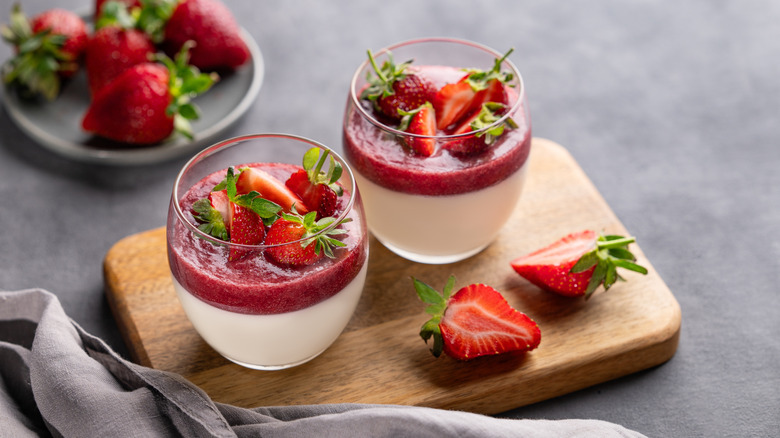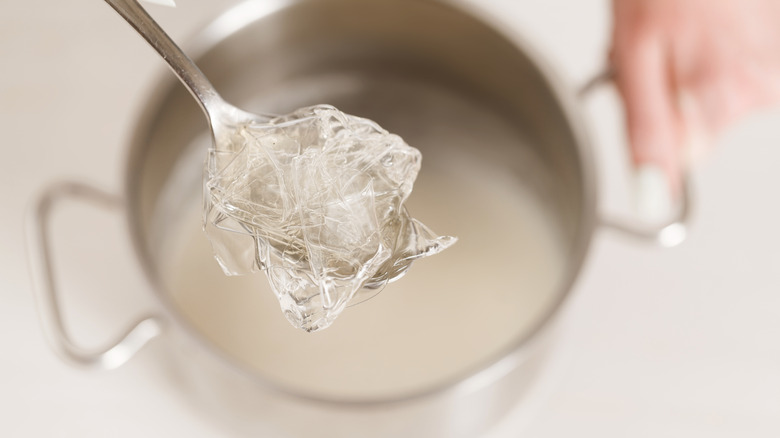Here's How Long You Need To Chill Desserts Made With Gelatin
Gelatin is an ingredient that is often used in recipes as a thickener or gelling agent. The collagen in this product is what makes your marshmallows gooey, your panna cotta custard-like, and your Jell-O jiggly. If you've ever unmolded your panna cotta just to be left with a liquid mess, you might agree that gelatin plays an important part in a dessert's texture; using it the right way is crucial. Chilling gelatin for enough time will give your recipe a much higher chance of success. While all gelatin desserts should chill for at least eight hours, 24 hours is best. Once your gelatin reaches the 24-hour mark, it will not be able to set any further, so there's no point in adding to that time clock. However, once you hit that mark, your dessert will reach the desired texture.
Gelatin requires time to set, as most recipes require it to be in a dissolved and liquid form. This is why you may want to make your gelatin-based desserts ahead of time, as they'll be best served the following day. If you're in a serious time crunch, you can speed up the setting process by mixing the mixture in a bowl over an ice bath until it starts setting, then pouring it into your mold.
How to make the most out of your gelatin
Apart from giving your gelatin adequate time to set, there are a few other elements that will give you the best dessert. When you're dissolving your gelatin with hot water, be mindful that you don't reach its boiling point (around 212 degrees Fahrenheit), as this is when the strength of the gelatin will rapidly decrease. This means that even if you chill your dessert correctly, your marshmallows or panna cotta won't become adequately firm. If you're making a dessert with tropical fruits like pineapple or kiwi, these contain an enzyme that will stop the gelatin from setting. Luckily, if you heat these fruits, this will stop the enzyme from reacting with the gelatin.
You should also know what to look out for when buying gelatin, as some have a higher "bloom" grade than others, which is essentially a way to measure its strength and stiffness. The strength of gelatin you need will vary depending on what you're making, but something like Jell-O requires about a 225-bloom grade. So if the one you've bought is much lower in strength, you might get soup instead of jello. There are definitely a few caveats when making gelatin desserts, but the texture of a silky sheep's milk panna cotta is good motivation to make them anyway.

